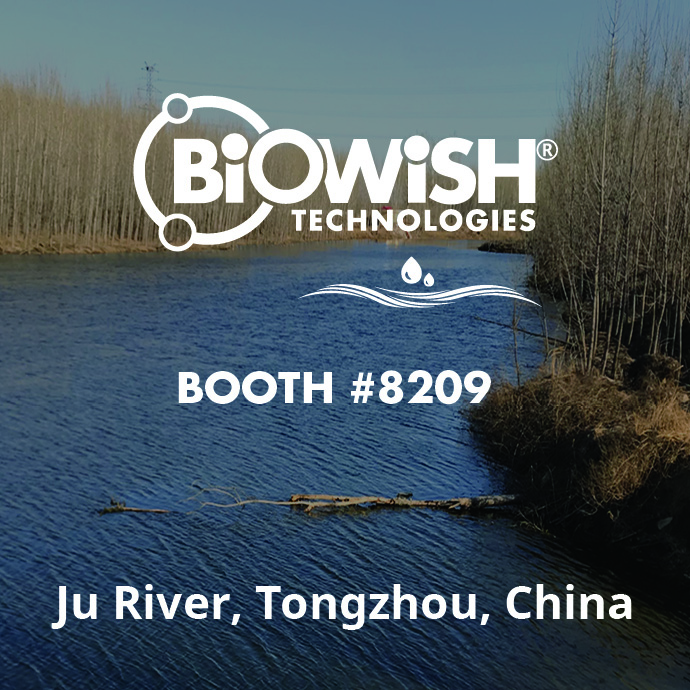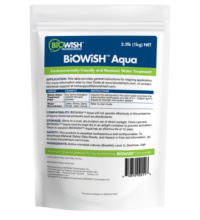Want to learn how BiOWiSH helped reduce ammonia levels by 92% in one of China’s black and odorous rivers? Visit us at WEFTEC 2019 booth #8209, or read the highlights below.
Compliance Achieved within Two Weeks

In one of our best trials to date, BiOWiSH Technologies partnered with local EPC Firms in China to reduce ammonia pollution in the Ju River in Sanhe City, Tongzhou district.
Within just two weeks, the ammonia levels reached compliance with local ordinances and the Ju River saw a 92% reduction in ammonia at a downstream sampling point. Click here for the case study, or read on to learn how we did it.
Cleaning up the Largest River in Sanhe, China
The Ju River is the largest water body in Sanhe, with a total length of 206 kilometers and a total area of 1712 square kilometers. Sanhe is a county-level city administered by Langfang prefecture in eastern Hebei province, China. As part of the Jing-Jin-Ji urban development plan, (named for Beijing, Tianjin, and the ancient name for Hebei, Ji) Sanhe City is surrounded by the Beijing and Tianjin municipalities.
Officials designed this urban development plan to distribute industrial and social resources across these counties. By relieving congestion in Beijing, moving pollutant-heavy industry away from the capital, and combining the resources of the three areas, the planners hoped to create a more balanced economic structure.
The population has grown rapidly in recent decades, and the old sewage network system could not manage the increase in sewage flow. As a result of the increase in sewage, the Ju River became “Black & Odorous” (B&O) and Sanhe government officials needed an effective treatment solution.
Sanhe's Solution
In 2018, Sanhe commissioned a process to treat the by-pass water flow from the Ju River. It is an attached growth system with a series of gravel beds promoting biofilm growth for the removal of biological nutrients.
Since the system came online in early 2018, ammonia nitrogen has been fluctuating between 8-10 mg/L, which does not meet the required effluent compliance levels. Local EPC firms suggested a partnership between BiOWiSH and the City of Sanhe government to help the Ju River meet compliance.
The BiOWiSH Protocol

To improve the water quality of the Ju River, our water treatment professionals recommended BiOWiSH® Aqua. BiOWiSH designed a continuous dosing plan starting with an initial daily dosage of 0.16 ppm while water temperature remained below 15°C.
Once the daily average water temperature rose above 15°C, the dosage would increase to 0.4 ppm. After effluent ammonia became compliant (below 2 mg/L), the dosage would return to 0.16 mg/L to optimize operational costs.
Dramatic Surface Water Improvements
Within 3 weeks of dosing BiOWiSH® Aqua, ammonia levels decreased dramatically. Average process influent and effluent ammonia concentrations showed an 82% decrease, from 8.13 ppm to 1.39 ppm. Samples from the sampling point located seven kilometers downstream showed an average 92% decrease in ammonia concentration, from 3.4 ppm to 0.26 ppm, only two weeks after implementing BiOWiSH®.
Powerful and all-natural, BiOWiSH® continues to work after leaving the unit to help realize the lowest ammonia levels on record at the downstream monitoring station. Further optimization work is now underway.
To learn more and talk with the water treatment professionals who created this protocol, visit BiOWiSH at #8209 or email us at wastewater@biowishtech.com.





